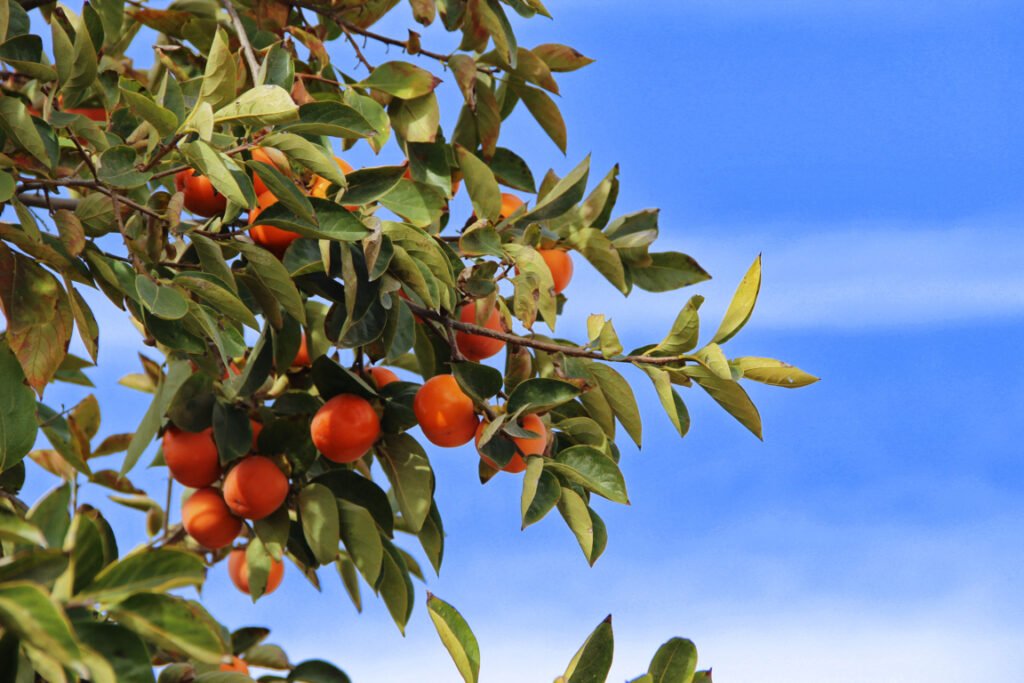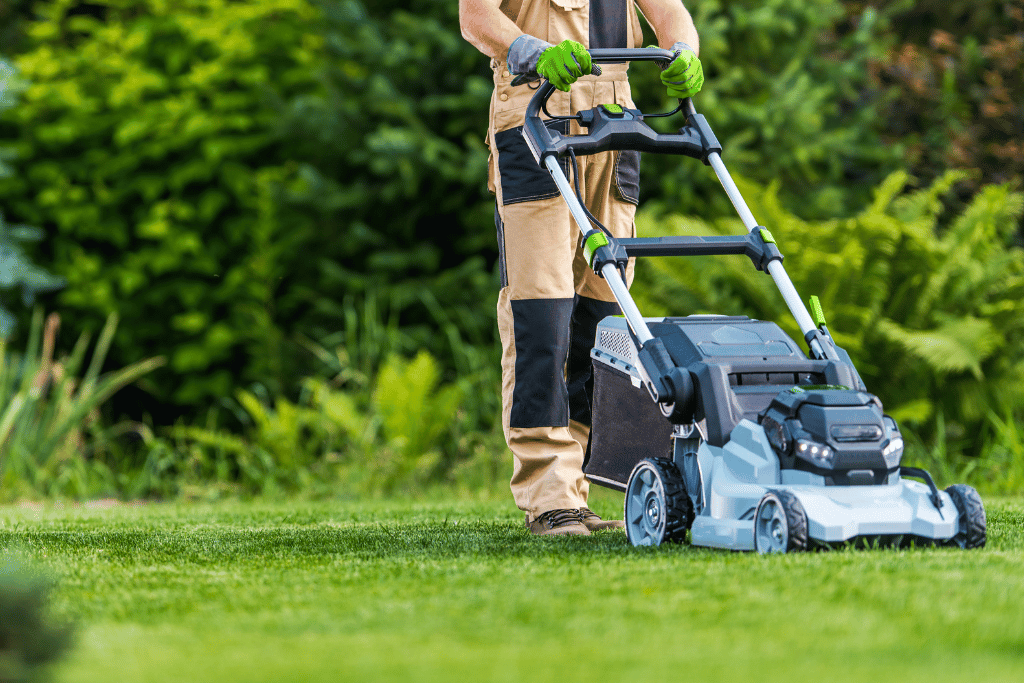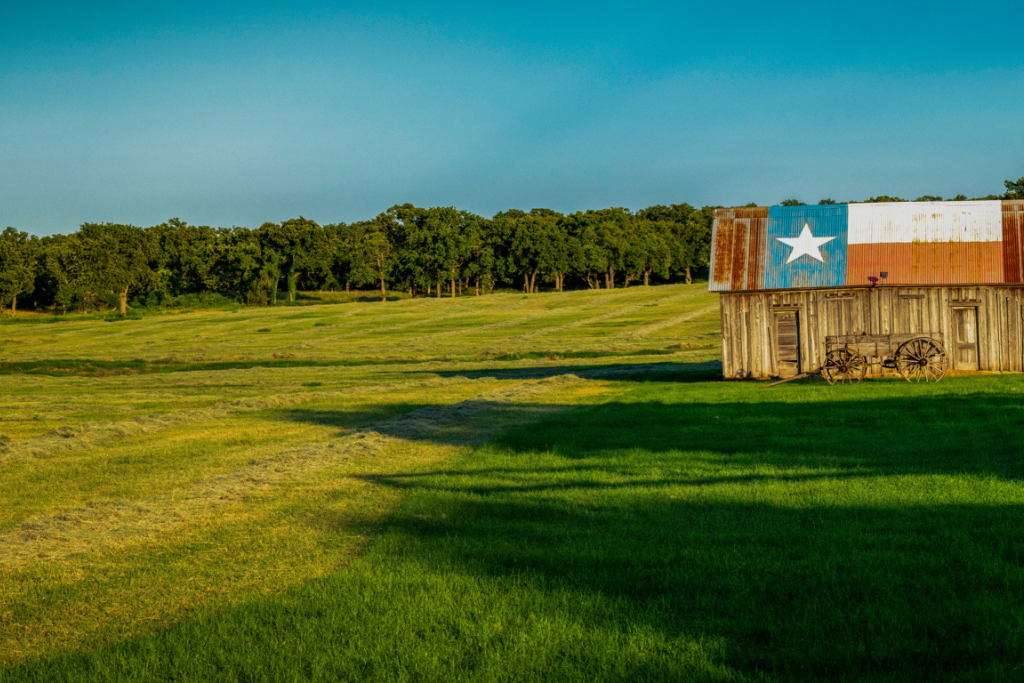
One only has to glance at a map to comprehend the land mass that is the state of Texas. The massive state borders Mexico, the gulf of Mexico and four different states, encompassing all sorts of climates and terrain. So it’s no surprise that the Lone Star state is home to numerous types of grass.
And like the above photo, it’s common for the wide open landscape to be populated with barns and large oak trees, casting long shadows.
Around the home, there’s bound to be shade cast throughout the day. It’s the perfect relief to the sweltering Texas temperatures and blaring sunshine.
But as a sun-loving plant, what types of grass will grow best in the shady portions of your lawn?
It can be a little confusing trying to make the right selection for that specific scenario. And establishing grass in the shade requires a dedicated effort.
That’s why we’ve assembled a list, along with a quick tip section, of the best grass varieties to plant and watch thrive under the shade around your Texas home.
Zoysia Grass
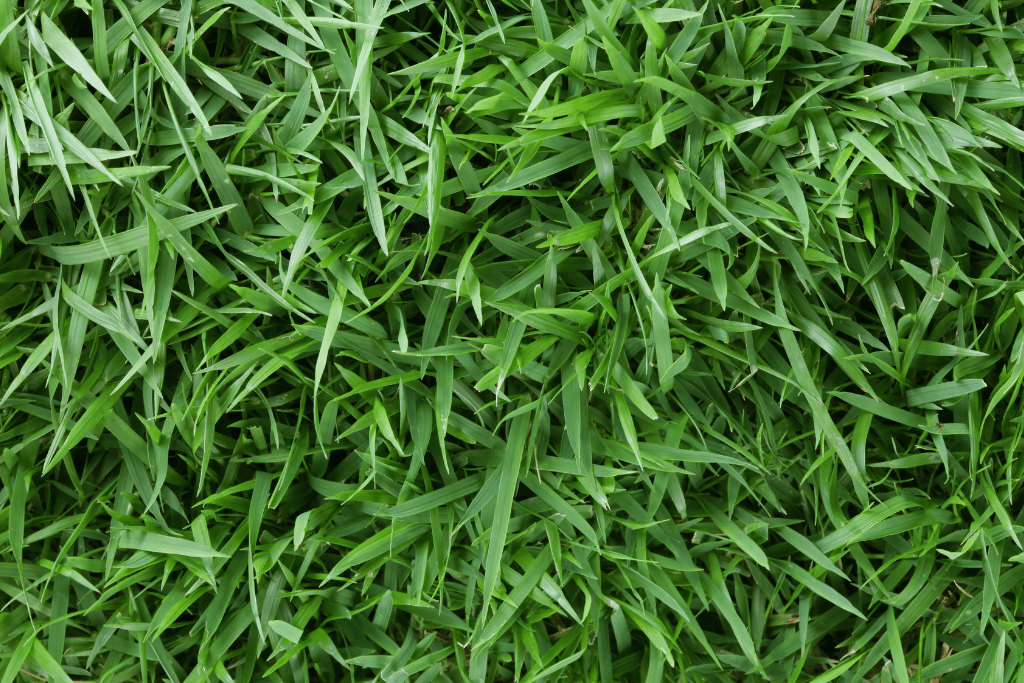
A popular turfgrass in the southern states of the US, Zoysia grass originates from Asia and is available in many different varieties.
The warm-season grass made its way to the US in the late 1800s. Turf breeders worked with the grass, adapting it for warm-season and transitional zone lawns.
Zoysia Grass is dense, durable and more tolerant of extreme heat and cold than other grass types.
Advantages of Zoysia Grass
- Does a great job of crowding out weeds.
- Will tolerate some shade.
- Has a strong tolerance for salty, coastal regions.
- A supremely soft grass, pleasantly comfortable to walk on barefoot.
- Will grow well in all soil types.
- Holds up well to heavy foot traffic.
- Cold tolerant, drought tolerant and works well in the transition zone where warm-season and cold-season grasses tend to fail because of extreme temperatures.
- Can be either low or high-maintenance turf.
Disadvantages of Zoysia Grass
- One of the slowest growing grasses.
- Due to the slow growth of seeds and plugs, sod is recommended.
- So, it can be expensive to get it established.
- Turns brown during times of drought.
- Thatch can become a problem because of the density of the grass.
The most heat tolerant of all grasses would be a good fit for any region of Texas. Zoysia grass grows very slowly which helps it stand up to intense heat and drought.
Due to its slow growth, zoysia grass isn’t tolerant of much foot traffic; it can’t quickly recover from it. Otherwise, it is commonly planted in low-traffic spaces for its dark green color and minimal maintenance requirements.
Types of Zoysia Grass
There are a few varieties of zoysia grass that have niche characteristics, suiting them perfectly for particular regions of Texas.
Zorro Zoysia
The fine blades may remind you of Zorro’s sharp pointed sword and the dark green shade is attractive.
Zorro is a popular variety in north Texas and one of the most shade-tolerant warm-weather varieties. It will do well in full sun or partial shade, only needing about 4 hours of sun per day.
Zorro is more water-dependent than other zoysia varieties and will need to be monitored for moisture and costs a bit more to sod a yard than St. Augustine grasses.
Palisades Zoysia
Palisades zoysia has an appealing dark green color with medium blades. It grows densely, effectively deterring weeds.
Palisades is a slow grower that tolerates shade well. It won’t require much mowing or maintenance other than the occasional aeration.
It has low fertilizer requirements and more than likely will never struggle with pests or disease.
Emerald Zoysia
With fine blades and dark green color, emerald zoysia blends will well with Bermuda grass.
It tolerates shade better than palisades zoysia and is more drought-tolerant than St. Augustine varieties. For a fine-bladed grass, emerald zoysia holds up exceptionally well to the cold.
Like other zoysia varieties, emerald will grow slowly and require little maintenance.
Read about Best Lawn Mower for Zoysia Grass.
Bahia Grass
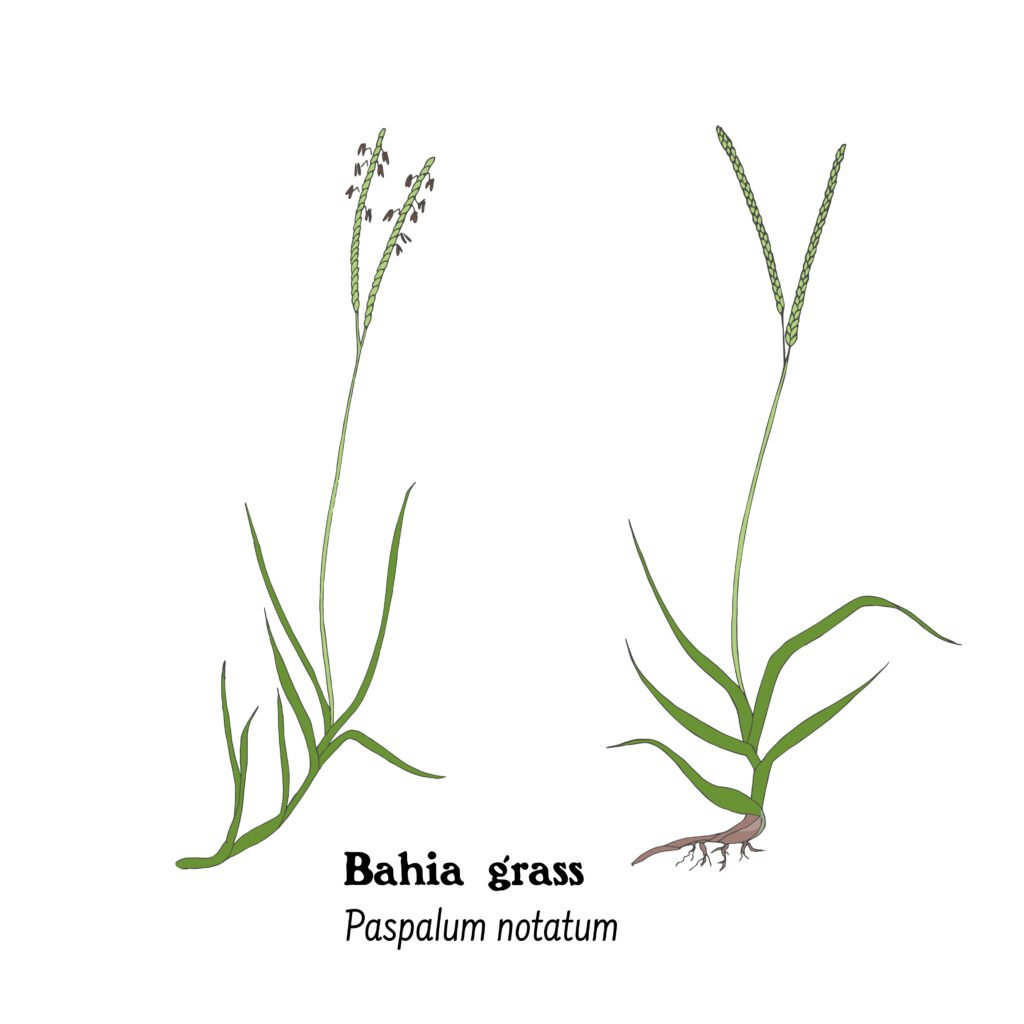
Used mostly in pastures, bahia grass has become a popular choice for lawns in warm coastal regions. It is low maintenance, deals well with infertile soils and is perfect for extensive acreage plantings.
Advantages of Bahia Grass
- Requires little water and fertilizer.
- Grows deep roots.
- Acts as a low-maintenance ground cover over large areas.
- Grows well in sandy and infertile soils.
- Doesn’t have problems with disease or insects.
- Doesn’t thatch.
- Can be established from seed or sod.
Disadvantages of Bahia grass
- Seedheads develop quickly, which necessitates frequent mowing.
- Doesn’t grow into a dense mat of grass.
- Open growth habit makes it susceptible to weeds.
- There aren’t many varieties to choose from.
Bahia grass is perfectly acclimated to the desert and coastal regions of Texas due to its extreme drought, salt and sand tolerance. It sends down profoundly deep roots that access water and nutrients well out of the reach of any other plant.
Bahia grass tolerates poor soil and full sun while also helping to prevent erosion, which can be beneficial in coastal regions.
St. Augustine Grass
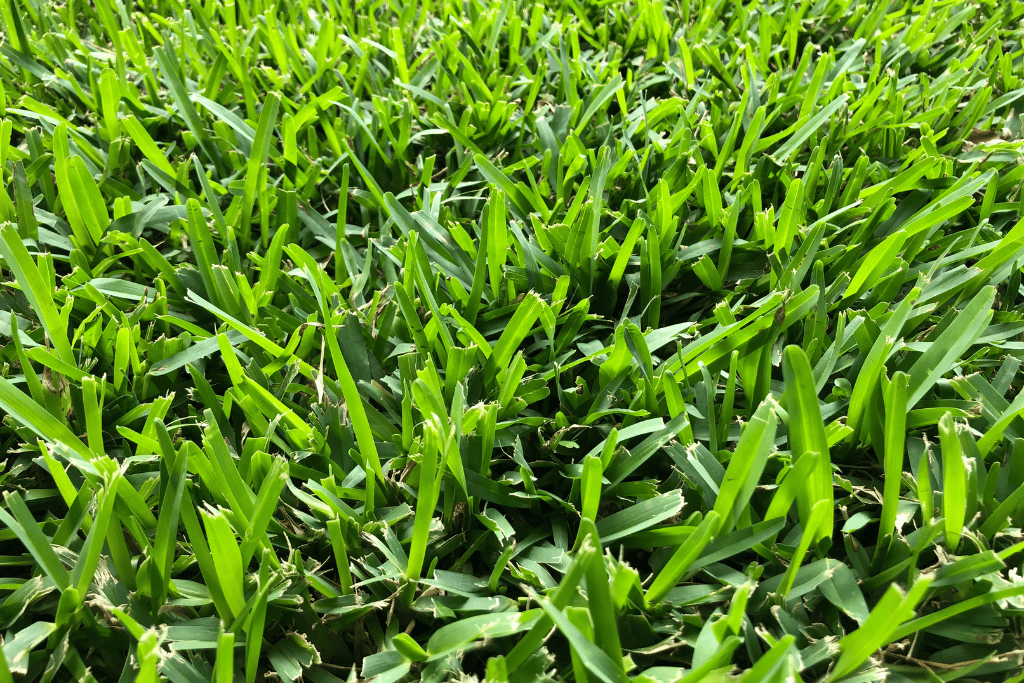
Perfect for coastal, subtropical regions, St. Augustine produces thick blades that are both beautiful and shade tolerant.
Popularly grown as a lawn in all of the southern states, this heat-loving grass, when properly maintained, beautifies landscapes and homes.
Advantages of St. Augustine Grass
- Loves heat but will tolerate shade better than any other warm-season grass.
- Grows very quickly.
- High salt tolerance, does well in coastal regions.
- Produces one of the thickest blades of grass.
- Crowds out most weeds.
- Can be planted as sod, plugs or sprigs.
Disadvantages of St. Augustine Grass
- Needs frequent mowing.
- Can only be grown in temperate regions, doesn’t tolerate cold.
- Can’t be planted from seed.
- Doesn’t have a dense growth habit.
- Vulnerable to fungal diseases and chinch bugs.
Thick leaves and an attractive blue-green tinge make St. Augustine a desired type of grass to grow for lawns, as long as foot traffic isn’t too frequent. Perfect for coastal properties, St. Augustine is resilient to the salty air and tolerates part shade conditions better than other warm-season grasses.
Types of St. Augustine Grass
Out of all of the varieties of St. Augustine grass, these are the types that will perform the best while chilling in the shade.
Seville St. Augustine
A perfect choice for partly shaded areas, St. Augustine Seville needs 6-7 hours of sun per day. The finely bladed variety grows into a lush, dense carpet and can be successfully cultivated throughout the state of Texas.
Seville isn’t fussy about the soil type but does not like being trampled on. It won’t endure much foot traffic, so only consider it for more secluded spaces.
Sapphire St. Augustine
For those who prioritize a pristine-looking lawn, look no further than sapphire.
It is shade tolerant yet showcases super-soft blue-green blades. Sapphire is also tough against salt and drought, qualifying as an easy option for the coastal regions of Texas.
Sapphire will require less maintenance and watering than other Augustine varieties and will spread aggressively, filling in bare spots without the need for frequent mowing.
Raleigh St. Augustine
The dark green color and medium blade of Raleigh St. Augustine make an excellent sod for shady areas, requiring only 4-5 hours of sun per day.
It can be grown under trees and other shaded places and will still grow quickly like other St. Augustine varieties.
Raleigh grows densely and effectively combats intruding weeds. It grows in any type of soil but needs more water than most types of grass.
Palmetto St. Augustine
Small blades, soft texture and dark green color make palmetto St. Augustine a luxurious choice for shady spots in the landscape.
Requiring only 4 hours of sun per day, palmetto is considered one of the absolute best varieties for shade growing. It is resistant to disease and tolerant of drought and cold. The dense growth habit of the grass will also make fighting weeds less of an issue.
Del Mar St. Augustine
One of the most cold-tolerant St. Augustine grass types, Del Mar also grows well in areas that get daily shade.
The dark emerald green, coarse blades will grow quickly and require frequent mowings. Make sure to bag the clippings to avoid thatch build-up.
Read about Best Lawn Mover for St. Augustine Grass.
Bermuda Grass
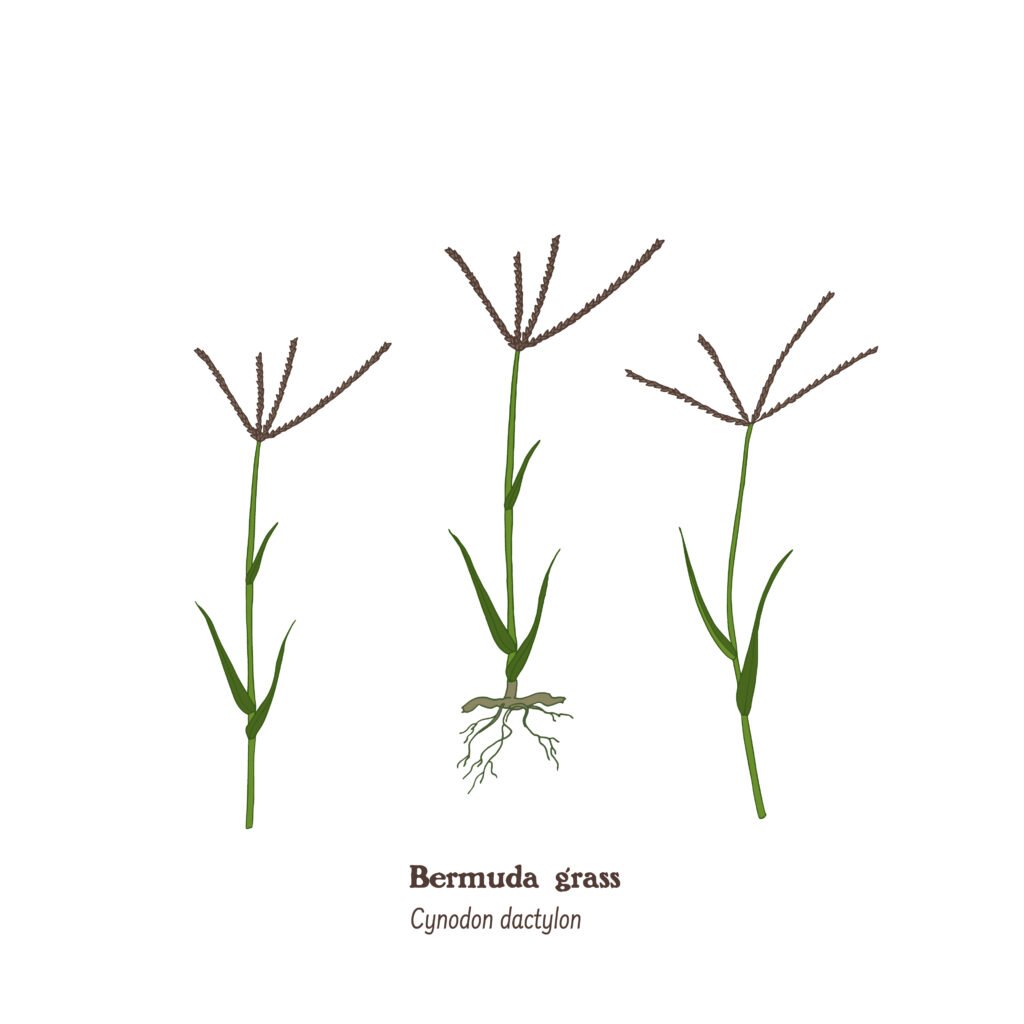
The warm-season turf was brought to the Americas from Africa by the Spanish. Also known as “South Grass” it is commonly used for lawns, pastures, sports fields, golf courses and parks.
Bermuda grass is cold tolerant to a degree but prefers tropical climates that stay above 60 degrees, where it will remain green year-round.
Advantages of Bermuda Grass
- Has supreme tolerance to heat, humidity, drought and salt.
- Roots can grow six feet deep, making it more resilient than other warm-season grasses.
- Has the fastest growth rate of other warm-season grasses, spreading by stolon and rhizome.
- Keeps its green color all year long in frost-free climates.
- Can be started from seed.
- Recovers very quickly from damage; ideal for athletic fields, golf course tee boxes and fairways.
Disadvantages of Bermuda Grass
- More sensitive to cold temperatures than other warm-season grasses.
- Needs full sun and excellent drainage.
- Spreads very quickly and is difficult to contain and may take over lawns.
- Goes dormant and turns brown during cold winters.
There is a multitude of varieties of Bermuda grass suited to all types of soil. They hold up well to full sun, drought and foot traffic.
Bermuda grass has the fastest growth rate of all warm-season grasses and is recommended for high-traffic areas like sports fields and golf courses. It is easy to establish from seed and will grow and recover quickly, which is appropriate for most regions in Texas.
Although Bermuda grass is widely grown throughout Texas and other southern states, it should only be cultivated in areas that receive minimal shade.
Bermuda Grass Celebration
This variety of Bermuda grass is the best choice for warm-weather shade tolerance. Celebration will stand up to foot traffic, recover quickly and is easy to maintain.
Read more Best Lawn Mower for Bermuda Grass.
Centipede Grass
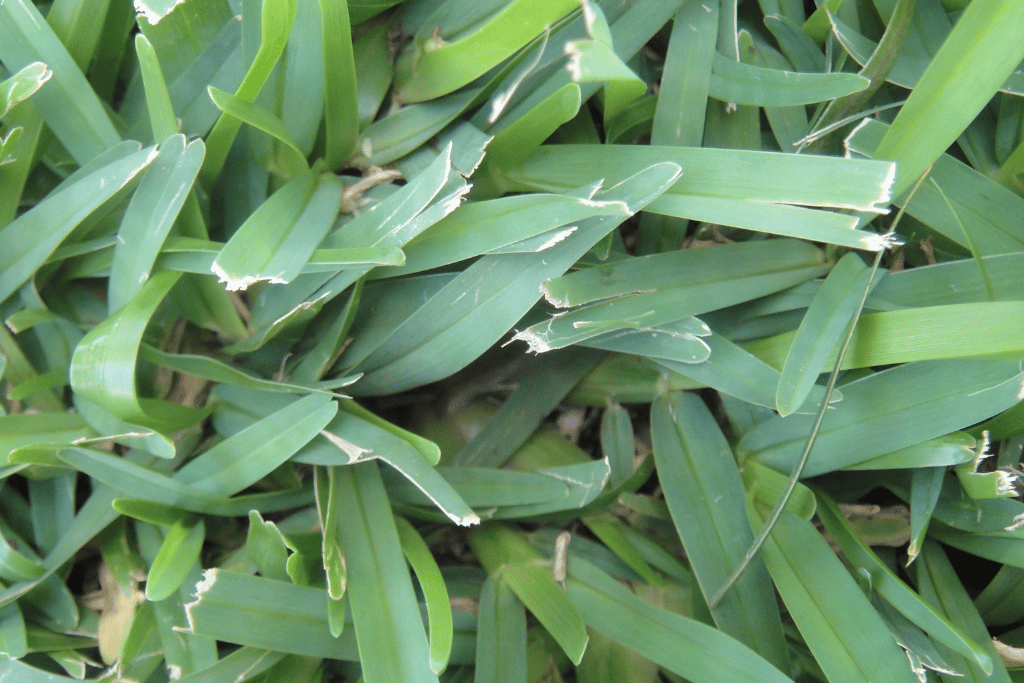
As one of the most popular warm-season grasses, centipede grass will grow well in most regions of Texas. The short, upright blades emerge from stolons and give the appearance of a mat of centipedes.
It grows slowly and requires little maintenance overall. The widely grown variety is slightly shade tolerant, it requires about 6 hours of sun per day. It can take up to two years to fully form a sturdy turf.
Centipede grass shouldn’t be used for yards or other high-activity areas, as it doesn’t withstand foot-traffic well.
Advantages of Centipede Grass
- It is easy to maintain.
- Centipede grass is tolerant of extreme heat, drought and excessive rain.
- It is able to adapt to different soil conditions and acidity levels.
- Weeds and pests are not a major concern.
Disadvantages of Centipede Grass
- Centipede grass tolerates part shade but will look better with more light exposure.
- Doesn’t hold up well to foot traffic.
- It doesn’t tolerate any level of salt and should not be grown in coastal zones.
Centipede grass can be useful as a set-it-and-forget-it type of grass. For partially shaded spaces with low foot traffic centipede grass will thrive without costing you much time, money or effort.
Mondo Grass
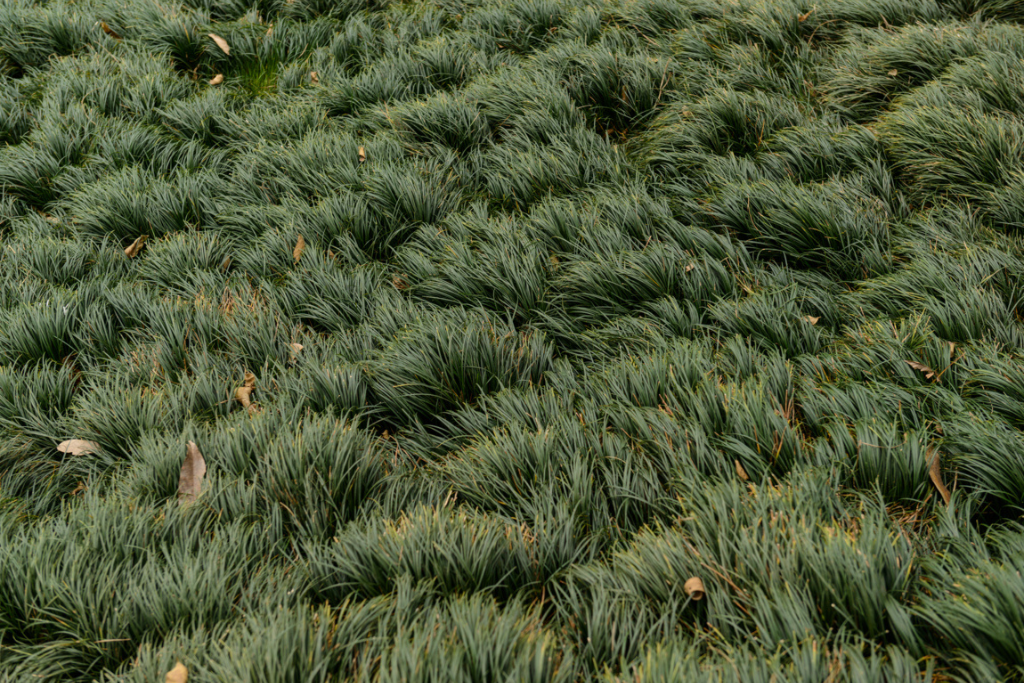
Mondo grass is a curious evergreen perennial that also goes by the nickname monkey grass. It grows well in most soil types and works so well as a ground cover that it is often used as a lawn in shady areas, among other uses.
Mondo grass grows slowly, is easily propagated and requires little maintenance once established. It will rarely if ever need to be mowed, adding to its appeal. Especially in moist soils, mondo grass will thrive, spread and produce lush dense tufts of grass.
It’s a perfect perennial for folks who would like to experiment with something other than traditional grass varieties. Mondo grass will surprise and delight homeowners with its versatility, shade tolerance, low maintenance needs and attractive look.
Tips for Growing Shade Grass in Texas
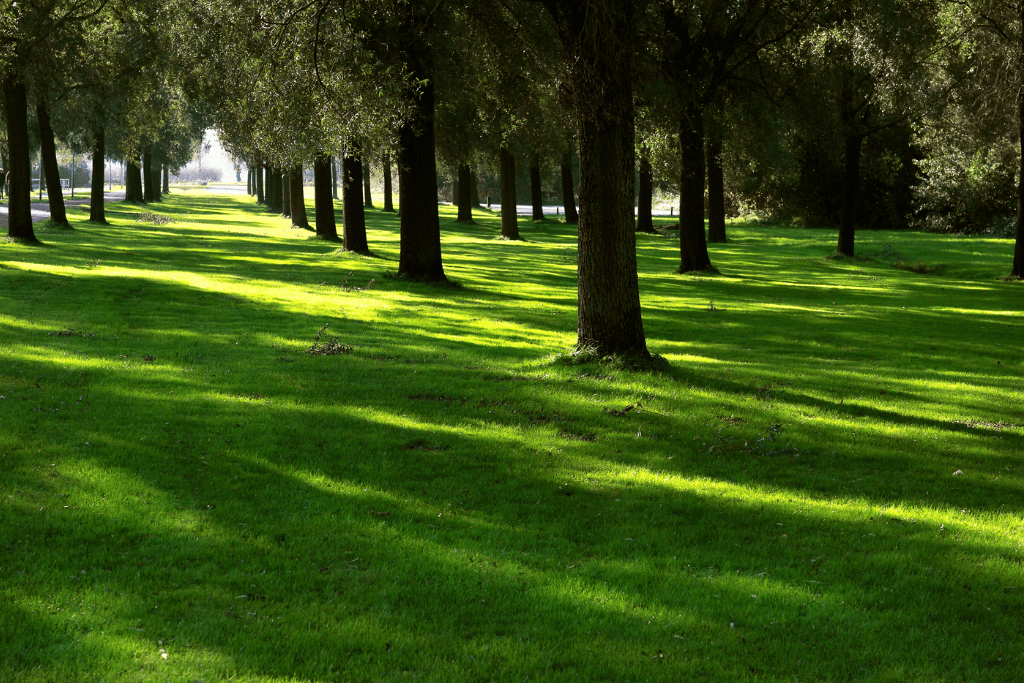
Growing grass in the shade can be tricky, so here’s a quick list of tips to help you get it established, keep it growing and maintain a consistent, thriving patch of grass.
- Water shaded grass at least once per week during periods of heat and drought.
- If planted under or around a tree, fertilize the grass around 3 times per year. Large and far-spreading tree roots tend to suck up the majority of nutrients in the space they occupy.
- Shaded grass that’s not in the immediate vicinity of other plants should be fertilized at about half the rate as grass grown in full sun. Shade grass doesn’t photosynthesize as much as full-sun grass and therefore won’t need as much fertilizer. Overfeeding grass can lead to major problems, so feed your shaded areas with a light hand.
- Trim hedges and trees to reduce the size of the cast shadows. If landscaping plants are pruned and thinned out properly, it may allow space for filtered sun to reach the surface of the grass. Don’t sacrifice the health of your plants or grass for the other’s sake. Proper planning, planting and selection of varieties will resolve shading issues.
- Do your best to minimize foot traffic on your shaded grass. It compacts the soil and makes for a more difficult growing environment. Try establishing a walking path in shady areas to prevent people from trampling the grass.
If you’re more of a west coast surfer than a Texas ranch cowboy, check out this article to find out which types of grass grow best in California.
Throwing Shade in the Lone Star State
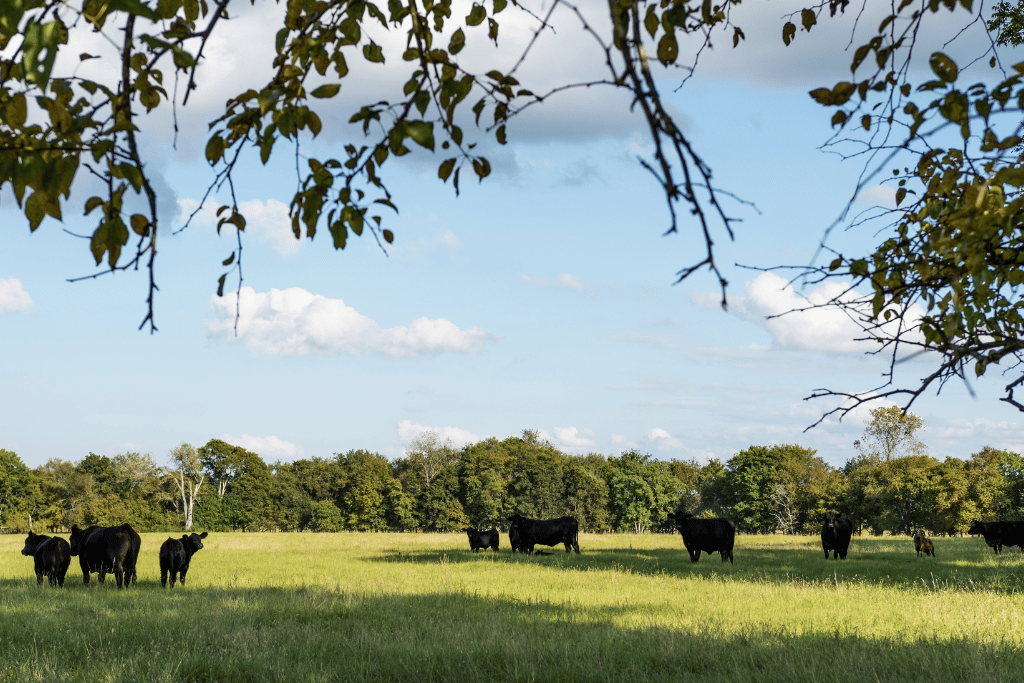
So there you have it – a complete rundown of the types of grass that grow well in the shady regions of Texas.
Select the species and cultivar that best suits your conditions and consider the tips provided to establish a thriving mat of grass.
Just imagine: Sitting in the shade, escaping the intense Texas heat and sinking your toes into a lush carpet of cool grass while sipping on a cold beverage.
Sounds like a little slice of heaven to me!


